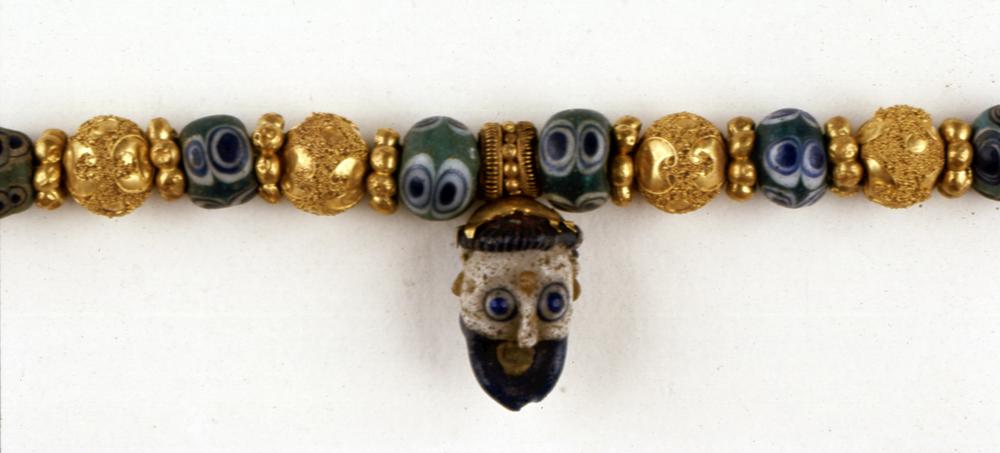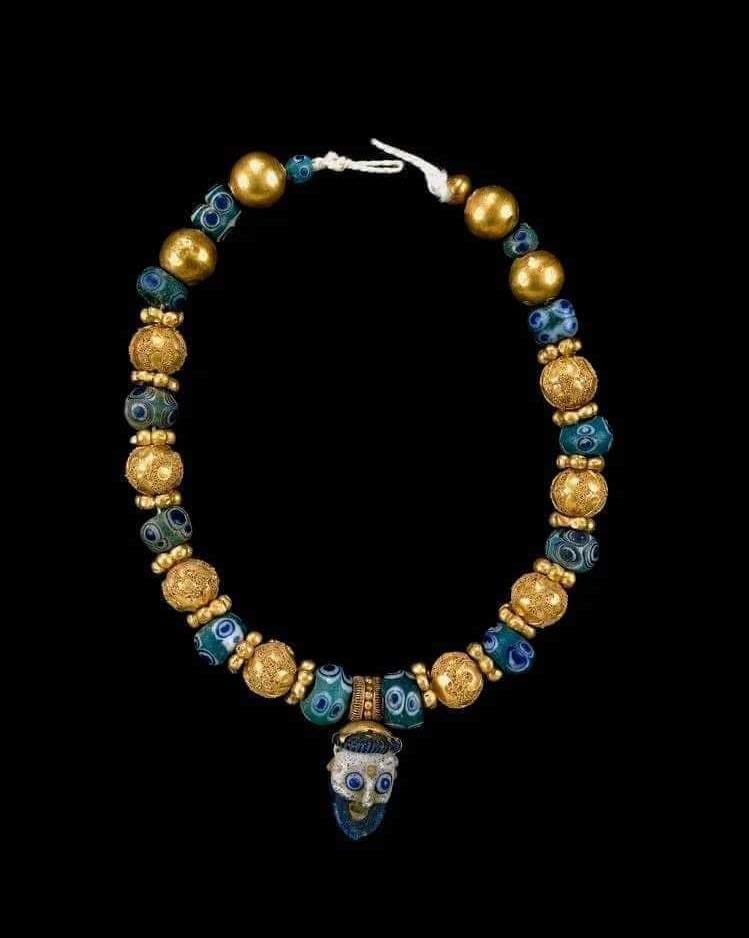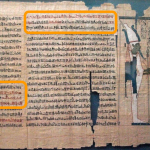An intricately wrought filigree, glass ornaments, and gold beads adorn this 550 BC Phoenician necklace.

The Phoenician Necklace, dating back to 550 BC, is a remarkable artifact that offers a glimpse into the craftsmanship and artistic sophistication of the ancient Phoenician civilization. Comprising a variety of materials and meticulously crafted components, this necklace serves as a testament to the wealth, trade networks, and cultural exchange that characterized the Phoenician world.
At the heart of this necklace are eight exquisite gold beads adorned with intricate filigree and granulation. These decorative techniques, which involve the meticulous shaping and soldering of tiny metal wires and granules, highlight the skill and precision of Phoenician goldsmiths. Each bead is a testament to the mastery of ancient metallurgy and the aesthetic sensibilities of its creators.
In addition to the adorned gold beads, the necklace features five plain gold beads, adding a sense of balance and symmetry to the overall design. These beads, though lacking in elaborate decoration, are no less significant, representing the inherent beauty of pure gold and the simplicity of form that characterizes Phoenician art.

Interwoven with the gold beads are sixteen spacer-rings, also crafted from gold, which serve both a functional and decorative purpose. These spacer-rings not only help to maintain the spacing and alignment of the beads but also contribute to the visual appeal of the necklace, adding texture and dimension to its design.
Adding a pop of color and contrast to the ensemble are fourteen green spotted glass beads, showcasing the Phoenicians’ proficiency in glassmaking and their penchant for incorporating vibrant hues into their jewelry. These glass beads, with their distinctive spotted patterns, provide a striking juxtaposition to the gleaming gold elements, creating a harmonious blend of materials and colors.
The pièce de résistance of the Phoenician Necklace is undoubtedly the hollow glass pendant, fashioned in the form of a bearded head and crowned with a gold cap. This intricately crafted pendant, with its lifelike details and expressive features, serves as a focal point of the necklace, drawing the viewer’s gaze and inviting closer inspection. It exemplifies the Phoenicians’ mastery of glassworking techniques and their penchant for creating jewelry that is both aesthetically pleasing and imbued with symbolic meaning.

Beyond its intrinsic beauty, the Phoenician Necklace holds immense historical and cultural significance. As a product of the flourishing trade networks that crisscrossed the ancient Mediterranean, it reflects the interconnectedness of civilizations and the exchange of ideas, materials, and techniques that characterized the ancient world. It serves as a tangible link to the rich cultural heritage of the Phoenician civilization, offering insights into their artistic achievements, technological innovations, and socio-economic dynamics.
In conclusion, the Phoenician Necklace stands as a testament to the ingenuity, craftsmanship, and artistic prowess of the ancient Phoenician civilization. With its blend of precious metals, vibrant glass, and intricate ornamentation, it embodies the wealth, sophistication, and cultural diversity of the ancient Mediterranean world. As a tangible artifact from antiquity, it continues to captivate the imagination of scholars, collectors, and enthusiasts alike, serving as a reminder of the enduring legacy of one of the most influential civilizations in history.










